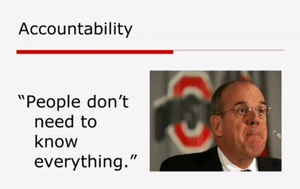Posts by hdcoadmin
Rape in the Fields
“They harvest the produce and process the meat and eggs Americans eat every day. But many migrant women are paying a high price to put food on their families’ tables,” according to a Center for Investigative Reporting piece.
Read MoreAs OSHA Emphasizes Safety, Long-Term Health Risks Fester
“The Occupational Safety and Health Administration, the agency that many Americans love to hate and industry calls overzealous, has largely ignored the slow, silent killers that claim the most lives.”
Read MoreIRE begins student sponsorship program
IRE is committed to developing the next generation of investigative reporters by introducing more students to the organization. To do this, we need your help. Please consider sponsoring a $25 student membership on behalf of your alma mater, college media or for an intern at your news organization. You don’t have to know a current…
Read More12 years after reporters help prove man’s innocence, prosecutors finally dismiss conviction
In December 2001, the Chicago Tribune published a five-part series, “Cops and Confessions,” with one of the installments highlighting the case of Daniel Taylor, an inmate serving a life sentence without parole for a double murder he didn’t commit. Nearly 12 years later, on June 28th, 2013, Cook County prosecutors would admit the truth and…
Read MoreTexas doctor’s patients end up maimed, dead as medical board fails to stop him
Dr. Christopher Duntsch began his medical practice in 2010, The Texas Observer reports, and by the time the state revoked his license in 2013, a series of botched surgeries had left two of his patients dead and four paralyzed. The real tragedy of the story, according to the Texas Observer, is how preventable it was:…
Read MoreA closer look at the black budget
The Washington Post takes an in-depth look at the “black budget” which spans over a dozen agencies to make up the National Intelligence Program. Wilson Andrews and Todd Lindeman use data visualizations to lay out what the $52.6 billion is spent on.
Read MoreNew webinar: Watchdogging Lions, Tigers, Bears, et al: Inside college sports
Jill Riepenhoff of The Columbus Dispatch shares tips on investigating college sports, from how to examine the rule book and find story ideas to using the NCAA’s infraction database and digging into athletes’ mysterious departures from their teams. Watch it here. Riepenhoff has worked at The Columbus Dispatch since 1985 and as a projects reporter…
Read MoreIRE trains at Temple’s Center for Public Interest Journalism
Last week IRE’s Jaimi Dowdell and Liz Lucas led a four-day boot camp in data analysis at Temple University’s Center for Public Interest Journalism. The Center for Public Interest Journalism sponsored the training, lowering the cost from $800 to $200. Participants learned to clean and analyze data using Microsoft Excel and Structured Query Language with Microsoft…
Read MoreCivil Beat in Hawaii announces creation of new public records law center
Journalists from an online news service in Hawaii have started a public service law center to help citizen’s navigate the state’s open record laws. Honolulu-based Civil Beat reports that Hawaii has decent public information laws, but in practice state and county government fail to follow and enforce the law. Patti Epler of Civil Beat describes…
Read MoreBounce-house rentals not all fun and games
“As children’s birthday parties ballooned into themed events and pricey productions in recent years, bounce houses became must-have entertainment for some parents. But as the bounce house rental business has grown locally, so have the number of unlicensed operators. At least 170 of these businesses advertise their services in the Houston region, but only 30…
Read More The IRE office will be closed from December 25th to January 5th.
The IRE office will be closed from December 25th to January 5th.

